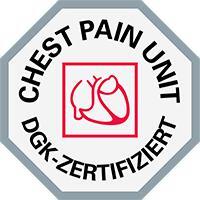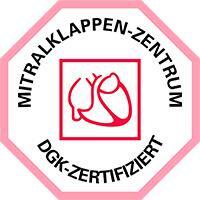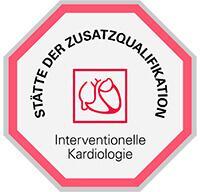Aortic Valve Stenosis — Balloon Valvuloplasty: treatment in the Best Hospitals of Germany
Treatment prices are regulated by national law of the corresponding countries, but can also include additional hospital coefficients. In order to receive the individual cost calculation, please send us the request and medical records.

Department of Cardiology and Angiology
The Department of Cardiology and Angiology offers the full range of medical services in the fields of its competence. The department's doctors specialize in the treatment of congenital and acquired heart defects. The key focus is on catheter-based heart interventions, which are characterized by a minimal trauma rate and allow patients to avoid an open operation. For this purpose, the department has three modern Cardiac Catheterization Laboratories. The department also houses an Intensive Care Unit and a Chest Pain Unit for patients with acute coronary syndrome. The medical facility has 82 beds. The department was awarded the prestigious quality certificate from the German Cardiac Society (DGK) for outstanding results in the treatment of mitral valve diseases and acute coronary syndrome. Another important area of work of the department's physicians is comprehensive heart examinations for the prevention of heart disease. For this purpose, specialized Check Up Programs have been developed here, which include an optimal set of diagnostic tests. The medical facility employs a highly professional team of doctors and nursing staff, which makes every effort to provide each patient with effective medical care in a pleasant and comfortable atmosphere.






Department of Cardiology and Angiology
The Department of Cardiology and Angiology offers the full range of medical services in the areas of its specialization. The medical facility holds consultations and carries out the diagnostics and treatment of diseases of the heart and blood vessels. The department's team of cardiologists focuses on patients with valvular heart disease, heart rhythm disturbances, coronary artery disease, heart failure, and congenital heart disease. The department has a Chest Pain Unit certified by the German Cardiac Society (DGK) for the treatment of acute coronary syndrome. In the field of angiology, of key interest is the treatment of peripheral arterial occlusive disease, vascular stenosis of various locations, including carotid artery stenosis, and deep vein thrombosis. During the treatment of diseases of the heart and blood vessels, the department’s specialists use various drug therapy regimens and perform image-guided interventional procedures. The medical facility has been recognized with quality certificates for transcatheter aortic valve implantation (TAVI) and treatment of heart failure and mitral valve disease. Patients are treated by highly qualified physicians who strive to restore the patient's health using sparing treatment methods.







Department of Cardiology, Angiology and Pulmonology
According to Focus magazine, the University Hospital Heidelberg ranks among the top five hospitals in Germany! The hospital is one of the most advanced and reputable medical institutions not only in Germany, but throughout Europe. There are more than 43 specialized departments and 13 medical institutes, which cover all fields of modern medicine. A distinctive feature of the hospital is the presence of unique therapeutic methods for the treatment of complex and rare clinical cases.





A balloon valvuloplasty is a minimally invasive treatment for aortic valve stenosis. The procedure is performed from inside the blood vessels. It is used mainly in children with congenital heart disease. In adults, aortic valve stenosis treatment in Germany is mainly carried out using heart valve replacement surgery. Balloon valvuloplasty in Germany can sometimes be used as a palliative procedure, as it can provide short-term improvement, preparing a patient for more efficient surgery in the future.
Content
Balloon valvuloplasty is a minimally invasive procedure performed under X-ray guidance. The chest is not opened, as a small incision in the leg or, less frequently, in the arm is sufficient to catheterize the blood vessels.
You can seek medical attention at the University Hospital Essen, the University Hospital Ulm, or the University Hospital Oldenburg.
You are welcome to contact the specialists at the Booking Health company. We will take care of all the arrangements for your trip, help you select a clinic, and translate medical records into German. You can have your treatment completed faster and on your preferred dates. Our specialists will book hotel and airline tickets for you, meet you at the German airport, and take you to the hospital by car.
The essence of balloon valvuloplasty
A balloon valvuloplasty is an endovascular procedure. It is performed through a small incision on the leg, less often on the arm.
A doctor delivers a balloon catheter into the aorta through the blood vessels under X-ray guidance. It is placed in the position of the aortic valve. Under conditions of high-frequency stimulation of the heart, which is provided by an electrode inserted into it through the femoral artery, doctors inject a saline solution with a contrast agent into the balloon. When inflating, the balloon increases the lumen of the aortic valve.
When can balloon valvuloplasty be used?
As the main treatment for aortic stenosis, a balloon valvuloplasty can only be used in children in cardiosurgery departments in Germany. In the case of a congenital malformation, the procedure provides patients with stable results and eliminates the need for anticoagulants.
However, aortic valve stenosis is an acquired defect in most patients. It develops in the elderly due to degenerative changes in the aorta caused by atherosclerosis and arterial hypertension.
The treatment method can rarely be used for acquired aortic valve stenosis. Balloon valvuloplasty is less effective than valve replacement because it:
- slightly increases the area and reduces the severity of the defect but does not eliminate it completely;
- provides short-term results because a few months after the procedure, the heart valve opening narrows again.
Because of these shortcomings, hospitals with cardiosurgery departments use balloon valvuloplasty in debilitated patients who are currently unable to undergo heart valve replacement surgery due to the high risk of complications and death. Balloon valvuloplasty is a sparing and minimally traumatic procedure with a short recovery time. It allows doctors to stabilize the patient's condition so that in a few weeks or months, they can undergo aortic valve replacement surgery.
You can undergo your aortic stenosis treatment with balloon valvuloplasty in Germany. Doctors in this country treat the disease with high success rates and a minimal risk of complications. Cardiosurgery doctors successfully perform the procedure even for debilitated and seriously ill patients.
You can make your appointment for treatment in Germany through the Booking Health website. Our portal presents the cost of operations at different clinics. When you make your appointment through our service, the prices will be lower for you than when contacting the hospital directly, due to the lack of high taxes for foreign patients.
Authors:
The article was edited by medical experts, board-certified doctors Dr. Nadezhda Ivanisova and Dr. Vadim Zhiliuk. For the treatment of the conditions referred to in the article, you must consult a doctor; the information in the article is not intended for self-medication!
Sources:
ECR - European Cardiology Review

